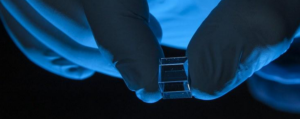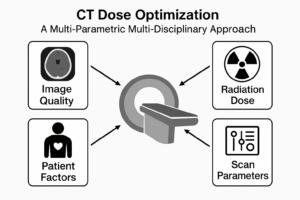Introduction
We need accurate data to see what targeted radionuclide treatments work and when.
The first step in ensuring the validity of clinical data, is accurately measuring the administered dose.
That measurement must be traceable to primary standards issued by national labs.
Below I explore the current status of primary standards for most radionuclides used in the targeted radionuclide therapy today.
Reasoning behind this
Why do we need accuracy?
There are two main reasons, and you can pick the most convincing answer, depending on who’s asking.
The first reason for being so fastidious is that it is a legal requirement to know exactly how much dose you have administered in therapy, in most countries.
The second reason is the sigmoid curve, pictured below, taken from radiotherapy (which is decades ahead of radionuclide therapy, in terms of radiobiological modeling).

A sigmoid or logistic curve typically models the tumour control or organ toxicity vs the dose (or disintegrations) in that tumour/organ over treatment. Unfortunately, a tiny change in the disintegrations will lead to a large change in tumour control or toxicities, due to the shape of the curve. If we don’t get this right, all radiobiological models, dose escalation studies, and efficacy reports will be biased and inaccurate.
Those disintegrations, also referred to as Time Integrated Activity Coefficient (TIAC), depend on many factors including:
- Gamma yield of each radionuclide
- Gamma energy efficiency of the detector
- Collimator efficiency and modeling of the detector
- Attenuation and Scatter corrections applied during reconstruction
- Timing of imaging following administration, and applied decay correction
- Fitting of Time Activity Curve and integration to find the TIAC
- Dead Time effects of detectors
- Partial Volume Effects of 3D imaging
- Calibration and cross validation and traceability of dose calibrator and SPECT scanner
This post will focus on the last one, which helps us to accurately find the activity administered (via a calibrated dose calibrator) and the activity present in organs/tumours at various time points (via a calibrated SPECT scanner).
The first step to obtain accurate activities, is to obtain a source of that radionuclide of interest from a national lab, and measure it with our equipment so we can calibrate them.
Lutetium-177 (Lu‑177)
Lu‑177 is widely used in peptide receptor radionuclide therapy (PRRT). Several NMIs have established primary activity standards for Lu‑177. For example, a 2012 international key comparison (CCRI(II)-K2.Lu‑177) involved 12 laboratories (including NIST, NPL, PTB, IRMM, etc.) assaying a common Lu‑177 solution. The consensus comparison reference value was 3.288 MBq/g and most labs agreed within about 0.6 %. NIST has served as pilot lab in these comparisons, and NIST has conducted 4πβ–LS (efficiency‐tracing) standardizations of Lu‑177. In practice, NIST and other NMIs have measured Lu‑177 via liquid‐scintillation methods and reentrant‐ionization chambers, and have determined calibrator “dial settings” for common dose calibrators (e.g. Capintec CRC series). These NMI standards allow hospitals to link their dose calibrators to SI‐traceable Lu‑177 activity. For example, NIST’s recent summary of calibrator settings reports that manufacturer-provided Lu‑177 settings agree with NIST standards to within a few percent. (Clinics calibrating their dose calibrators to NIST/SRM standards can achieve measurement uncertainties on the order of 1 %.)
Yttrium-90 (Y‑90)
Y‑90 is a pure β– emitter (T_½ ≈ 64 h) used in radionuclide therapy (e.g. microspheres, antibodies). NIST has a primary standard for Y‑90: in fact, NIST issues a Standard Reference Material (SRM 4427) of Y‑90 solution. The SRM certificate certifies a massic activity (e.g. ~4.555 MBq/g at reference time) with ~0.58 % expanded uncertainty. This SRM provides an NIST‐traceable source for calibrating ionization‐chamber dose calibrators. Other NMIs (PTB, LNE‑LNHB, etc.) have participated in Y‑90 standardization (often via linked Sr‑90/Y‑90 comparisons), and some have secondary or transfer standards, but NIST’s SRM is the definitive national reference. Clinical dose calibrators (Capintec, Atomlab, etc.) typically include a Y‑90 dial setting derived from such primary calibrations. Studies show that properly applied calibrator settings yield reproducible Y‑90 assays. For example, independent NIST and NPL calibrations of Y‑90 agree within <0.2 %. In practice, a hospital can calibrate its dose calibrator with the NIST SRM or NMI‐linked chamber, enabling SI‐traceable, reproducible Y‑90 activity measurements.
Astatine-211 (At‑211)
At‑211 (T_½ ≈ 7.2 h) is a promising α‐emitter for targeted therapy, but no national primary standard has been established. As of recent reports, the CIPM Key Comparison Database contains no entry for At‑211, and a proposed EURAMET comparison notes that “no international traceability [is] established” for At‑211. In other words, neither NIST nor other NMIs currently offer a SI‐traceable At‑211 reference. Laboratories working with At‑211 must rely on secondary assays (e.g. γ‑spectrometry against molybdenum impurities, or calculated yields from irradiation) for calibrating dose calibrators. The lack of a primary standard means broader uncertainties and potential variability in clinical trial results. Until an NMI establishes a standard (e.g. via future CIPM/EURAMET comparison), traceability for At‑211 assays remains limited.
Lead-212 (Pb‑212)
Pb‑212 (T_½ ≈ 10.6 h) is an α‑emitting progenitor in some therapeutics. Recently, NIST has established the first primary standard for Pb‑212 activity. Using a 4πβ–LS TDCR method, NIST measured 212Pb in equilibrium with progeny and propagated decay data to obtain a massic activity standard. This new standard has been validated by CIEMAT/NIST (CNET) counting and γ-ray spectrometry, and has been used to calibrate NIST’s re-entrant ion chambers and dose calibrators for Pb‑212. Thus NIST can now supply reference solutions of Pb‑212 for hospital calibrations. Prior to this work, there was no published primary standard for Pb‑212. Now, dose calibrator dial settings for Pb‑212 can be tied to NIST’s standard. NIST warns that calibrator settings for Pb‑212 depend on source form and solution, but they provide benchmark values for well‐characterized geometries. (No other NMI is known to have a separate Pb‑212 standard; NIST’s standard closes this gap.) In short, NIST provides Pb‑212 traceability, enabling hospitals to use calibrated dose calibrators or well counters for 212Pb with ~1 % accuracy.
Actinium-225 (Ac‑225)
Ac‑225 (T_½ ≈ 9.92 days) has emerged as a major α‐therapy radionuclide. Recently, NMIs have established primary standards for Ac‑225. In 2019, PTB (Germany) prepared a 225Ac solution and submitted ampoules to the BIPM SIR. PTB’s standardization (via TDCR liquid scintillation) yielded ~10.066 kBq with ~0.6 ‰ uncertainty, confirming a high-precision primary assay. In 2024, NIST reported its own primary standard for 225Ac. Bergeron et al. (NIST) used multiple LS coincidence methods (TDCR, CNET, LTAC) to measure 225Ac in 0.1 M HCl. They demonstrated consistency across methods and transferred the standard to ion chambers and well counters. Thus NIST now offers an SI-traceable Ac‑225 standard. (A forthcoming EURAMET comparison is arranging distribution of 225Ac samples from CERN-MEDICIS, with NPL and LNE‑LNHB leading, to link European labs to these standards.) In summary, both PTB and NIST (and by extension Polatom/other labs) now have primary standards for 225Ac. NIST explicitly notes its primary standard and SIR submission to tie NIST, PTB, and others into the international system. These standards allow dose calibrators to be calibrated against primary activity values. For example, Bergeron et al. derived calibrator settings for 225Ac (CRC-15R, CRC-55tR) from their standard and report that proper settings reproduce the true activity within ~0.5–1 %. In practice, hospitals can calibrate their dose calibrators with a NIST- or PTB-traceable 225Ac source (or use the provided dial settings) to achieve reproducible measurements.
Clinical Dose Calibrators and Traceability
- Calibration protocols: NIST and other NMIs maintain repositories of dose calibrators and publish recommended settings. For example, NIST has measured and tabulated dial settings for >20 radionuclides (including Lu‑177, Y‑90, Pb‑212, Ac‑225) on common systems. They report that “manufacturer-provided calibration settings give activities that agree with NIST standards to within a few percent”. Thus hospital dose calibrators (e.g. Capintec CRC‑15R/CRC‑35R, Atomlab 500, Veenstra, etc.) can be calibrated by applying these NMI-derived settings or factors. NIST notes that the dominant uncertainties are those of the primary standard, so a well-calibrated dose calibrator can reach ~1 % expanded uncertainty.
- Reproducible measurements: Several studies confirm that traceable calibrations yield consistent assays across sites. For instance, an evaluation of Lu‑177 calibration across European hospitals showed that when each center tied its measurements to primary standards, inter-center differences were <1 %. Similarly, NIST found its Y‑90 SRM replicates a Capintec chamber reading with <1% bias for a 5 mL geometry. In contrast, for nuclides without primary standards (like At‑211), hospitals must rely on γ-counting or vendor settings, making quantitative traceability harder. In practice, the existence of NMI standards for Lu‑177, Y‑90, Pb‑212, and Ac‑225 means that, with proper calibration, hospitals can achieve SI‐traceable and reproducible activity measurements for those isotopes.
- Guidance on calibrator use: Metrology guidelines (e.g. AAPM Report 181) emphasize the use of NMI-traceable sources or procedures for dose calibrator calibration. The latest EANM technological guidelines likewise note that calibrators should be calibrated with standards of similar geometry and decay characteristics. In summary, NMI documentation (NIST publications and SRM certificates) and international comparisons demonstrate that if a hospital uses NIST- or NPL-based calibrations for Lu‑177, Y‑90, Pb‑212, and Ac‑225, its dose calibrators will be traceable to SI and measurements reproducible to ~1–2 %. By contrast, for At‑211 no such direct standard currently exists, so nuclear medicine practice must rely on less direct calibration methods until a reference standard is developed.
Conclusion
In the US and Europe, primary standards (often based on liquid-scintillation TDCR or ionization chambers) exist for Lu‑177, Y‑90, Pb‑212, and Ac‑225. NIST (USA) provides standards or SRMs for these nuclides, and PTB and other EU labs contribute complementary standards (as evidenced by CIPM key comparisons). In the UK, NPL has participated in intercomparisons and maintains secondary standards linked to these primaries. By contrast, At‑211 has no primary standard at any NMI. NIST and other NMIs have also published calibrator “dial settings” and protocols for these isotopes. Together, these resources ensure that hospitals can (for all but At‑211) calibrate dose calibrators traceably and achieve reproducible activity measurements in radionuclide therapy and theranostics.
Acronyms and Abbreviations
Organizations and Institutions
- NMI – National Metrology Institute
- NIST – National Institute of Standards and Technology (USA)
- NPL – National Physical Laboratory (UK)
- PTB – Physikalisch-Technische Bundesanstalt (Germany)
- LNE-LNHB – Laboratoire National Henri Becquerel (France)
- NMIJ – National Metrology Institute of Japan
- NMIA – National Measurement Institute Australia
- BIPM – Bureau International des Poids et Mesures (International Bureau of Weights and Measures)
- CIPM – Comité International des Poids et Mesures (International Committee for Weights and Measures)
- CCRI(II) – Consultative Committee for Ionizing Radiation, Section II (Measurement of radionuclides)
- EURAMET – European Association of National Metrology Institutes
- CIEMAT – Centro de Investigaciones Energéticas, Medioambientales y Tecnológicas (Spain)
- MEDICIS – MEDical Isotopes Collected from ISOLDE (CERN program)
Radionuclides and Chemical Elements
- Lu‑177 – Lutetium-177
- Y‑90 – Yttrium-90
- At‑211 – Astatine-211
- Pb‑212 – Lead-212
- Ac‑225 – Actinium-225
- Sr‑90 – Strontium-90
Measurement & Calibration Terms
- SRM – Standard Reference Material (official certified reference by NIST)
- SIR – Système International de Référence (BIPM’s International Reference System for radioactivity comparisons)
- SI – Système International (International System of Units)
- TDCR – Triple-to-Double Coincidence Ratio (a liquid scintillation counting method)
- CNET – CIEMAT/NIST Efficiency Tracing Method (for liquid scintillation standardization)
- LTAC – Live-Timed Anticoincidence Counting (another primary standardization method)
- 4πβ–LS – 4π Beta Liquid Scintillation (a geometry used in primary radioactivity measurements)
Medical and Technical Terms
- PRRT – Peptide Receptor Radionuclide Therapy
- γ-ray – Gamma ray
- β– emitter – Beta-minus emitter (a radionuclide that emits electrons)
- α emitter – Alpha emitter (a radionuclide that emits helium nuclei)
- T_½ – Half-life (the time for half the radioactive nuclei to decay)
References
A Primer on Dose-Response Data Modeling in Radiation Therapy
https://pmc.ncbi.nlm.nih.gov/articles/PMC9339232/
Results of an international comparison for the activity measurement of 177Lu | NIST
https://www.nist.gov/publications/results-international-comparison-activity-measurement-177lu
The Standardization of 177Lu by 4πβ Liquid Scintillation …
An update on “dose calibrator” settings for nuclides used in nuclear medicine – PMC
https://pmc.ncbi.nlm.nih.gov/articles/PMC6237185/
https://tsapps.nist.gov/srmext/certificates/4427L.pdf
[DOC] An update on “dose calibrator” settings for nuclides used in nuclear …
https://tsapps.nist.gov/publication/get_pdf.cfm?pub_id=925383
https://physics.nist.gov/ICRM/Day2/ProposedprojetcIRAt-211.pdf
Primary standardization of 212Pb activity by liquid scintillation counting – PMC
https://pmc.ncbi.nlm.nih.gov/articles/PMC9827475/
BIPM.RI(II)-K1.Ac-225_2019
Activity measurements and calibrations for 225Ac in radioactive equilibrium with its progeny
https://tsapps.nist.gov/publication/get_pdf.cfm?pub_id=958355
https://www.euramet.org/



